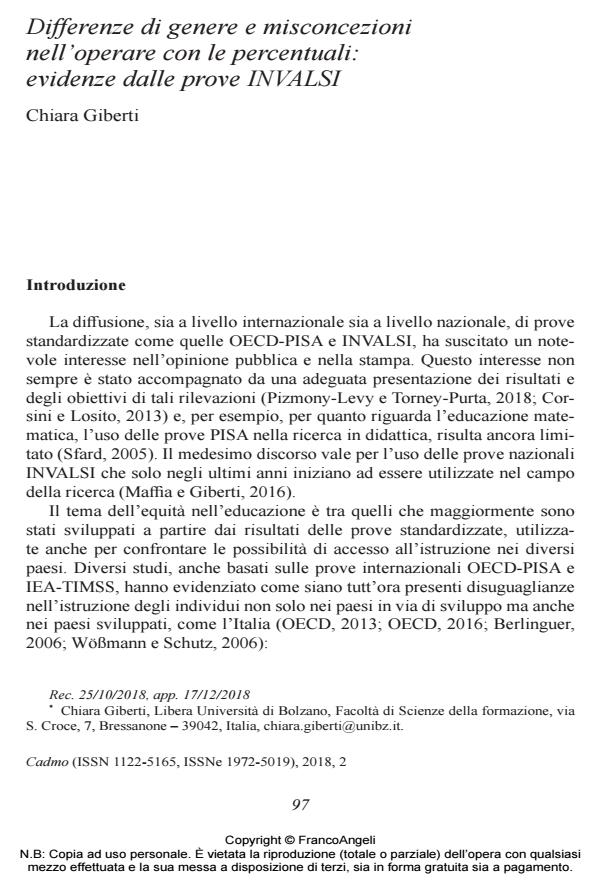Gender differences and misconceptions in operating with percentages: evidence from INVALSI tests
Journal title CADMO
Author/s Chiara Giberti
Publishing Year 2019 Issue 2018/2
Language Italian Pages 18 P. 97-114 File size 416 KB
DOI 10.3280/CAD2018-002007
DOI is like a bar code for intellectual property: to have more infomation
click here
Below, you can see the article first page
If you want to buy this article in PDF format, you can do it, following the instructions to buy download credits

FrancoAngeli is member of Publishers International Linking Association, Inc (PILA), a not-for-profit association which run the CrossRef service enabling links to and from online scholarly content.
International standardized assessments highlight the existence of gender differences in mathematics performances: male outperform female in many countries and in Italy this gap is remarkable. The results of Italian standardized assessment, called INVALSI test, confirm the existence and the importance of this gap. In this paper we examine three INVALSI items for Grade 10, similar in terms of mathematical content, item type and question intent. The quantitative analysis of each item, based on the Rasch Model, shows that male and female answers have distinctly different response behaviors, and these differences are similar in the three items. A pedagogical interpretation of the quantitative results led us to explain this gap in terms of a different influence of a specific misconception on males and females.
Keywords: Gender gap; misconceptions; percentages; Rasch analysis; standardized assessment.
- The Properties of Powers: Didactic Contract and Gender Gap Federica Ferretti, Chiara Giberti, in International Journal of Science and Mathematics Education /2021 pp.1717
DOI: 10.1007/s10763-020-10130-5 - Changing the Order of Factors Does Not Change the Product but Does Affect Students’ Answers, Especially Girls’ Answers Clelia Cascella, Chiara Giberti, Giorgio Bolondi, in Education Sciences /2021 pp.201
DOI: 10.3390/educsci11050201 - The role of metaphors in interpreting students’ difficulties in operating with percentages: A mixed method study based on large scale assessment Chiara Giberti, George Santi, Camilla Spagnolo, in European Journal of Science and Mathematics Education /2023 pp.297
DOI: 10.30935/scimath/12642
Chiara Giberti, Differenze di genere e misconcezioni nell’operare con le percentuali: evidenze dalle prove INVALSI in "CADMO" 2/2018, pp 97-114, DOI: 10.3280/CAD2018-002007